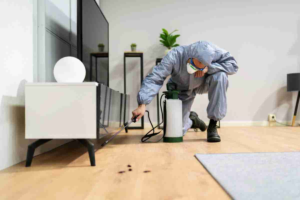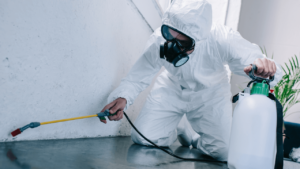The kitchen is one of the most popular yet costly home remodeling projects. It can also add the most value to a house, as it is the hub of a family’s daily activities.

Houston Kitchen Remodeling involves crucial alterations and innovative ideas, such as reworking layouts or adding more storage solutions. Renovation, on the other hand, focuses on updating what’s already there.
Cabinets are a staple in the kitchen, offering storage space for culinary supplies and various ingredients. They can also be used throughout the home, such as in bathrooms and basements. With smart design and installation, cabinets can offer seamless storage solutions across multiple areas of your home.
One of the first things homeowners need to consider when planning a remodel is how much they can afford. It’s essential to establish a budget before proceeding with the project, as this will determine the scope and materials used. Then, it’s time to start thinking about the style and features you want in your new space. Cabinets are available in a wide range of styles, finishes and sizes, so there’s sure to be an option that fits your vision.
The Difference Between a Cabinet and a Cupboard
A cabinet is usually considered to be furniture with doors and drawers. A cupboard, on the other hand, is a six-sided wooden box closed on five sides with a door or drawers on the sixth side. Cabinets are designed to fit specific dimensions within a room, while cupboards can be customized in size.
The type of cabinet construction can have a huge impact on the overall look and feel of the space. Framed cabinets, which are typically the more traditional option, feature rails and stiles that form a face frame at the front of the cabinet box. Full access cabinets, which are more modern in appearance, do not have a face frame at all. This allows the drawers to be sized almost perfectly to the interior opening of the cabinet.
Some modern cabinet trends include using a variety of hardware to customize the look of the space. Push to open is an option that eliminates the need for handles, and is popular in high end kitchens. Lazy susans, a type of turntable that can be mounted in a corner or between two cabinets, are another way to make lower cabinet contents easier to reach without uncomfortable or dangerous crouching.
Cabinets can be a great place to store decorative items, such as china or art. However, the clutter can quickly build up if not contained. Installing a set of wall cabinets about 2 feet (70 centimeters) above a work area can provide a convenient place to stash craft supplies, such as decorative papers, ribbon, yarn and other wayward materials.
Countertops
Countertops are more than workhorses in a kitchen; they define the overall design and style of a space. A beautiful countertop can inspire decisions about color, cabinetry and even seating like stools. So when it comes to choosing countertops for your remodel, there’s no wrong answer.
Today’s kitchen design trends encourage mixing countertop materials to create a balanced and functional look. Choose a warm and natural material like butcher block for the area of your kitchen where you’ll be slicing veggies or rolling pastry, while using solid surfacing for other areas that need to stand up to heat and moisture.
Quartz is a popular choice for modern countertops due to its durability and seemingly limitless color and pattern options. It requires little maintenance and resists scratches, stains and other common damage better than most countertop materials.
Granite is another timeless and durable countertop material. It is a classic that pairs well with many design styles, from Minimalist to Modern. Its veining and distinctive markings make it a stylish choice for any kitchen.
Laminate countertops are affordable and come in a variety of colors, patterns and textures to match any decor. With easy DIY refinishing kits at your disposal, you can revamp outdated laminate countertops and give them the appearance of natural stone or modern concrete.
If you’re not ready to invest in a full countertop replacement, consider revitalizing your existing surface with a paint job. Many homeowners use DIY refinishing kits to breathe new life into old laminate or tile countertops, achieving the look of granite or natural stone for less.
If you’re planning on selling your home in the future, it may not be practical to replace your countertops with a material that will drastically change the look of your kitchen. However, your current countertops may still function well and provide a good return on investment when you’re ready to sell. In that case, you could repurpose or upcycle your old countertops in other parts of the house. For example, an old countertop might make a great workbench in the garage or a sturdy nightstand.
Flooring
The right flooring can make a huge difference in your kitchen. Choose a material that is durable and easy to clean. Some materials can also resist water and staining better than others. It is important to consider comfort as well, especially if you spend a lot of time in your kitchen standing. Many people find that hard surfaces are uncomfortable over long periods of time.
It is best to install the floors before you install the cabinets. This will give you a smooth, finished appearance that will help your cabinet installation go more smoothly. However, if your budget is tight, you can install the cabinets first and then install the flooring.
Flooring options include tile, vinyl, wood, and laminate. There are a wide range of colors, patterns, and textures available to complement any décor. Tile is a popular choice because it is durable and water-resistant. It can also be refinished in the future to refresh its look. Vinyl is an affordable option that offers similar qualities to tile, but it comes in a variety of styles and colors to match any kitchen. Wood and bamboo are also durable and water-resistant. They come in strand woven, engineered, and solid forms, and can be refinished.
A kitchen renovation is a great way to add value to your home. However, it is important to make sure that you do not over-remodel your home. If you spend too much money on a kitchen remodel, you may not get enough back when it is time to sell.
To ensure that your kitchen remodel is successful, you need to take the time to think about what your goals are for your kitchen. If your current layout is not functional for you and your family, or if it has wasted space, you may need to consider a full remodel. It is also important to determine how much value you want to add to your home, and how that will impact the cost of your remodel. If you are unsure, you can hire a professional kitchen remodeling contractor to assist you in creating the perfect kitchen for your lifestyle and budget.
Lighting
The kitchen is the heart of the home, where families gather and meals are prepared. It’s no wonder that the kitchen is one of the top areas homeowners want to remodel. It is important to remember when remodeling your kitchen that the goal should not be to increase your home’s resale value but to design a kitchen you enjoy. A few simple updates can dramatically change the look of your kitchen and improve its functionality.
Lighting is an important part of any room, but it’s especially vital in the kitchen. Adding more light can instantly brighten up the space, making it feel bigger and more inviting. It’s also a great way to highlight the kitchen’s features. There are three primary types of lighting: ambient, task, and accent. Ambient lighting illuminates the entire space and is usually a ceiling fixture. Task lighting, such as pendants over the island or under-cabinet lights, illuminates workspaces and makes it easier to perform tasks, like chopping vegetables. Accent lighting, such as sconces or strip lighting, highlights special features like artwork or open shelving.
For a more dramatic impact, opt for a statement lighting fixture. This could be a large chandelier or something more understated that resembles a sculpture. Pendant lights have become very popular in the kitchen and come in a variety of styles, shapes, and materials. For a modern look, choose fixtures with sleek metal finishes.
If you have a vaulted or slanted ceiling, consider using flexible chains to hang your pendant lights so that they don’t rest on the ceiling. This is a great solution if you’re not able to install a full pendant system because it allows you to use the ceiling space efficiently.
Another option is to add recessed or track lighting. This can be installed during your remodel and will give you the flexibility to add a decorative fixture later on if you decide you want to change it up. Just make sure you have the infrastructure in place to support your decorative fixture when it’s time to add it. Installing the junction box and recessed boxes during your kitchen remodel is an inexpensive and easy way to future-proof your lighting.








